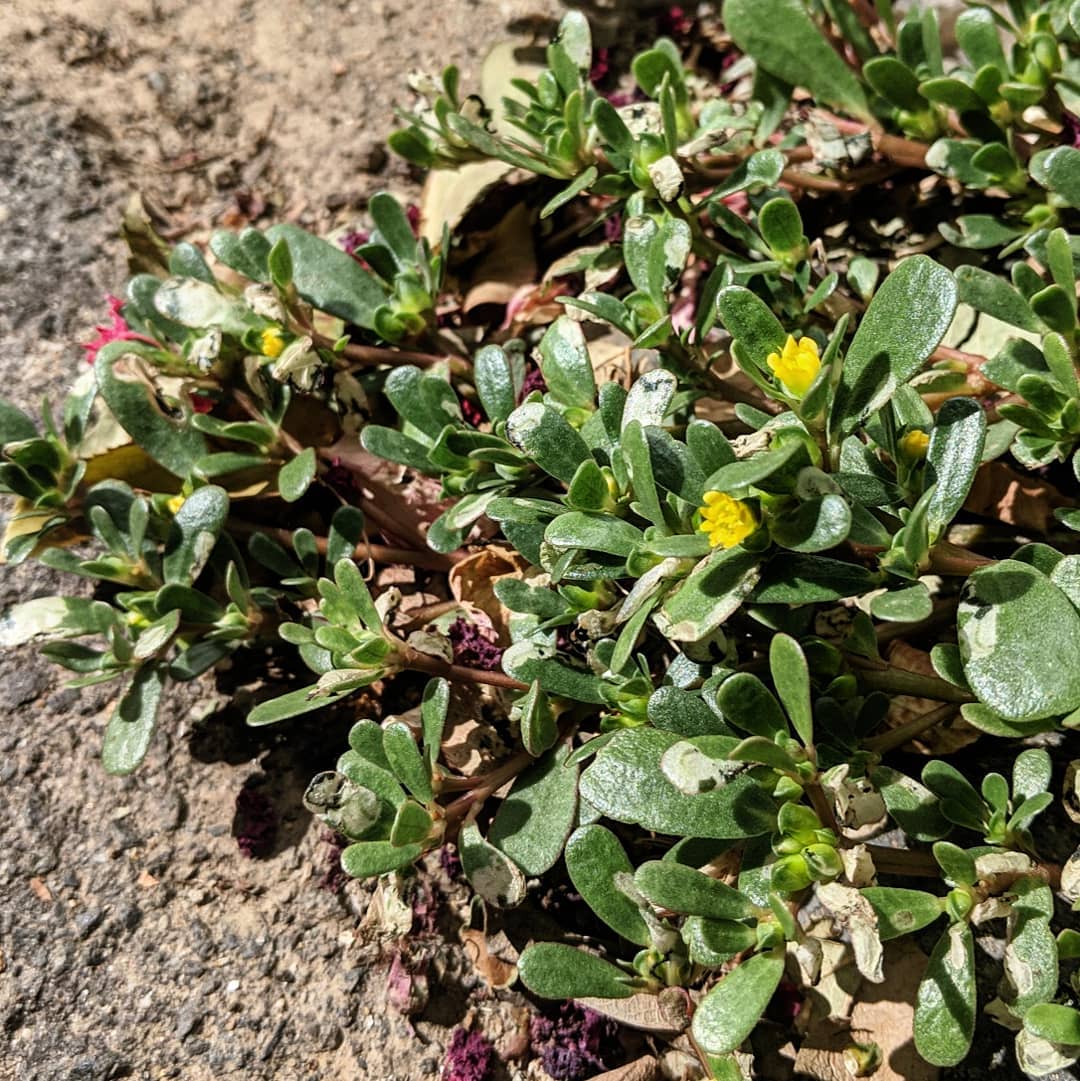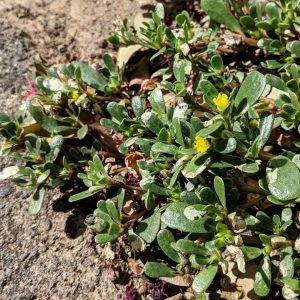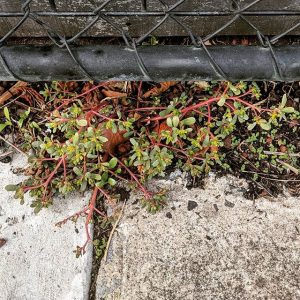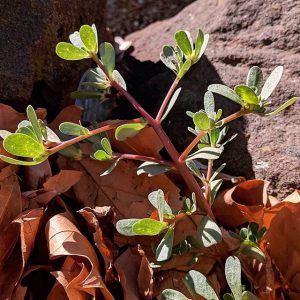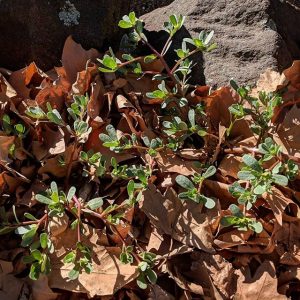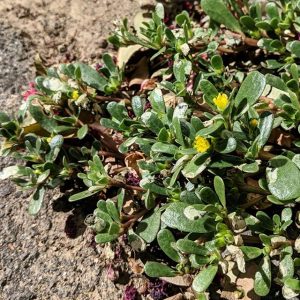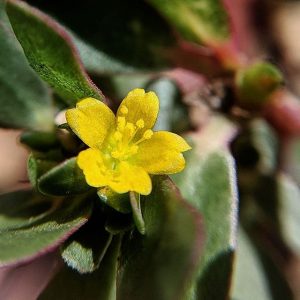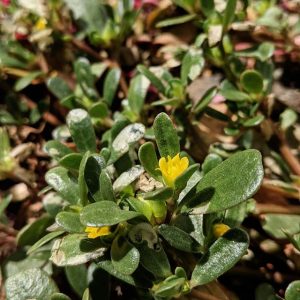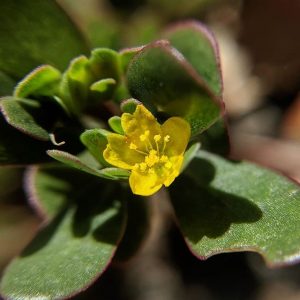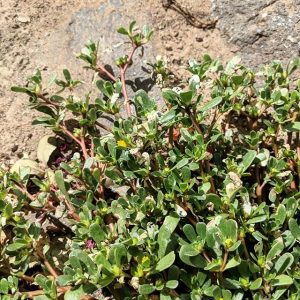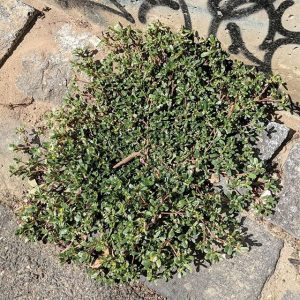Purslane, Pigweed (Portulaca oleracea complex), the patchwork succulent carpet of Melbourne’s ruinous pavements.
A globally distributed species complex, P. oleracea was once treated as a Eurasian/North African original, but is now understood to have been present in the Americas and Northern Australia prior to European colonial activities. The original phylogeny has yet to be fully unpacked (although see Ocampo and Columbus 2012 for a start); the complex includes members from throughout the pan-global tropics and sub-tropics, including Australia. There are also a number of native Australian Portulacas outside of P. oleracea, although again they are generally restricted to arid and tropical parts of the continent.
Purslane has not been treated as indigenous to Victoria. Distributed commercially in Melbourne by 1855 as a medicinal and vernacular food green, the species was reported in Victoria and NSW in Hooker’s 1859 account of the naturalised flora. However, that was likely based on a collection by Ferdinand von Mueller on the Snowy River in 1854, and the early date and remote collection suggests that there should be some doubt about the original status of the species complex in Victoria. It would be prudent for someone competent to confirm those details from the RBG’s herbarium record. That the next two records, made in 1880 and 1896, were also collected from northern sites (in those cases, from the Riverina), is at least suggestive that Purslane may have been present in parts of the state prior to the colonial arrival.
At any rate, today Purslane is best known as a rugged and prolific urban crackweed, a colonist of pavements and exposed earth wherever grasses are impeded. The Melbourne population would represent largely imported genetic material, although perhaps with some input from northern Australia. Often shaggy, its lush foliage and spongiform structure are not an entirely unattractive garnish to the metropolitan’s harsh streetscapes, and compared to many of the alternatives the plant is a relatively benign signal of material decay.
View Original Post on Instagram
Search for information about Portulaca oleracea complex in the Flora of Victoria
View information and occurrences of Portulaca oleracea complex on the Atlas of Living Australia
